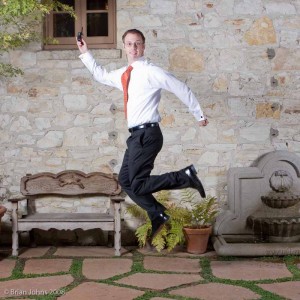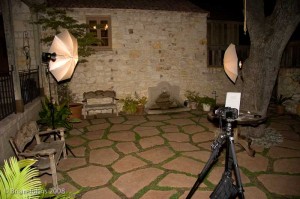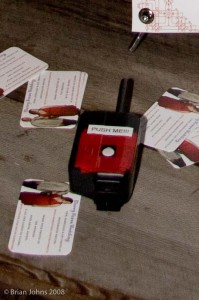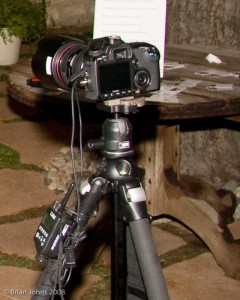It has come to my attention that some people use flickr as the primary repository for their pictures. Then, for some reason or another (warranted or unwarranted) flickr closes their account and they apparently lose access to all of their photos. And then they blog about how flickr closed their account and they have no other copies of these photos. People use flickr to store their only copies of a photo? Why would you do this? Come on people, get some self-reliance...
tools
Adobe continues install stupidity in CS4?
According to this Hardmac.com rumor, Adobe's installer is STILL refusing to install the Creative Suite on case-sensitive file systems. This is an issue that bit me hard earlier this year when I had to reinstall my Mac just to install CS3. According to the same page Adobe is also disabling installs on SSD drives (flash drives, Solid State Drives, etc.) So if you just bought a MacBook Pro with the Solid State storage option to make a rough, tough, shock-resistant traveling photo editing station, you're out of luck!
It would be nice to see some sort of in-depth explanation from Adobe about why these limitations exist. Combined with the superficial crappiness of the Adobe Installer (and updater) apps, little gotchas like this just make Adobe look bad. The install is one of the worst parts of the Adobe experience - at least give us a little info so we don't feel like you're just doing it to us for the fun of it!
Does anyone out there know why these limitations exist?
Photobooth at a wedding
 Last weekend I went to wonderful wedding where in addition to being a guest I set up a self-service photobooth for people to take their own pictures. This is a quick rundown on what worked, what didn't, and what I'd do differently. I'd never set up a self-serve thing before and overall I learned more about people and crowds than photography. :-)
Last weekend I went to wonderful wedding where in addition to being a guest I set up a self-service photobooth for people to take their own pictures. This is a quick rundown on what worked, what didn't, and what I'd do differently. I'd never set up a self-serve thing before and overall I learned more about people and crowds than photography. :-)
I've seen photobooths at events before and I was looking forward to setting one up. People inherently take different pictures of themselves when they're in control of the picture. Kids especially like to ham it up when they think they can get away with it and even adults act more spontaneous when there's not the pressure of a photographer telling them to ham it up.
In the simplest sense, a photobooth is just a camera on a tripod with a way to trigger it. Here was the list of requirements I laid out:
1) It has to be easy to use. People shouldn't have to do anything besides smile and push the button. People don't want to think.
2) It has to be able to run mostly unattended.
3) The images have to be high quality because people should be able to make some decent sized prints.
4) This was going to be set up in an outdoor courtyard from about 2:00pm until 9:00pm which means the ambient light went from bright to zero over the course of the day.
5) I wanted to be able to accommodate large groups of people.
6) I'd like to shoot at f/8 for sharpness and ISO 400 for noise in order to get the best quality out of the Canon 40-D.
7) The fewer wires running on the ground the better, since hordes of small children and drunken revelers might be running around with little supervision. That means wireless triggering.
In order to get sharp pictures (especially outdoors, at night) some sort of flash is needed. In order to light groups of 10 people or so for a hours at a time I opted for plug-in studio flashes (Alien Bees) instead of speedlights like a Canon 580 EX II. That means no TTL metering, so we're shooting on manual mode with changing sunlight throughout the day. I ended up adjusting the exposure a couple times throughout the day and just metering with the histogram. The only real exposure problems were white shirts (and dresses) getting too close to one of the umbrellas which led to over exposure.
Everything was shot in RAW so there was a lot of latitude for post-processing. A total of about 600 shots were taken which worked out to about 7.5 GB of data.
Because I wanted to keep the wires to a minimum I elected to go with a PocketWizard radio system. I used a PocketWizard Plus transmitter with a big label saying "Push Me!" as the trigger, with everything else covered with black electrical tape. All the switches and most of the writing was covered up to make the trigger as plain and simple as possible. The last thing I wanted was somebody to accidentally switch it off or change the channel.
The transmitter talked to a PocketWizard MultiMAX set in relay mode, connected to the Canon 40-D twice. (One cable for triggering and one cable for flashing) There was a PocketWizard Plus receiver on one of the Alien Bees flashes with a splitter and a thin wire run around to the other Alien Bees flash. (It's important to trigger the Alien Bees electrically and no rely on the photo eye because people invariably use their own cameras with flashes and it would cause the Alien Bees to flash at the wrong time.)
The trigger cable between the two flashes was a pain and I wouldn't choose to do that again - I just don't have enough PocketWizards to do it completely right.
I can't understate how important the "User Interaction" portion of this setup is. It's crucial to keep things as simple as possible because people are thinking about the wedding, their friends, their kids, having fun - everything except how to follow instructions.
Downsides:
Photo Review: The biggest downside was there was no way to review the pictures. Next time I'd like to have the camera shooting tethered and an LCD monitor setup that displays recent pictures so people can see the pictures being taken. I lieu of that I had an X marked on the ground and a box to show the bounds of the frame. (the framing got messed up when someone re-aimed the camera, but it was still close.)
User Tampering: The camera was just sitting out on the tripod and ballhead and was very accessible (although weighted down with a 15 pound sandbag). I had the zoom and focus rings taped over but at some point somebody re-aimed the camera and the blue lines on the floor made it in the frame. Also, despite the sandbag on the center post of the tripod it may have gotten jostled or shifted. People also wanted to mess with the camera to try to review the images but the pre-trigger cable means that none of the buttons on the camera work
Equipment:
Here's everything you should need if you're going to set one of these up like this:
- Camera with remote trigger and flash ability (I ended up at 24mm)
- Tripod with sandbags for stability/safety
- 2 A/C powered strobes (I used an AB 400 and an AB 800)
- 2 white shoot-through umbrellas
- 1 PocketWizard transmitter
- 1 PocketWizard MultiMAX to receive the trigger pulse and then trigger the flashes
- 1 PocketWizard receiver for each flash
- 1 lightstand with sandbags for each strobe
- more extension cords than you would expect
- gaffer's tape
- electrical tape
- painter's tape
- a sign with simple instructions
- velcro ties or cable cuffs to secure cords
- a least one spare of everything
Shooting on white seamless
Photographer Zack Arias has put together a five-part discussion about how to build a space for shooting people on white seamless, and all the different ways you can make it look. Great post! This is one to bookmark, or send to the Mrs. when she wonders why you want the basement to be 20' x 40' x 14' high. :-)
I don't have quite that much space (yet) which is fine since I mostly do products on the white seamless, but the concepts are sound. You can scale it all down to a smaller size for tabletop work.
Lightroom 2.0 Beta
As some of you might know, Adobe is sharing a pre-release version of Lightroom 2.0 with the world. You can find out more about it at the Adobe Labs website. I've installed it and given it a whirl, but most of the coolest of the new features require Photoshop CS3, which I don't yet have.
One feature that's totally worth the price of admission though is the ability to specify a vignette for a photo that's already been cropped. Yay! I crop most pictures after the fact, so this went on my wishlist of features as soon as I saw the regular vignette tool. I've been waiting for this for a long time.
Lightroom Beta Invitations
There's some sort of limitation on how long the Beta will run for you unless you have a Lightroom 1.x serial number or are "invited" by someone with a Lightroom 1.x serial number. Let me know if you're interested in getting an invitation for the Beta of 2.0. I'm a big fan of Lightroom and I love to spread the word...
Vietnam: What worked and what didn't
Compared to the hassles that I had with camera gear in Jamaica, this trip was a breeze. Virtually everything worked flawlessly and I owe a debt of gratitude to the people that loaned me stuff I didn't have. (My wishlist just got a little bigger...) Every trip I take I learn a little more and it's starting to pay off in terms of lower stress levels, fewer missed moments, and better results. For this trip I kept in mind everything I learned in Jamaica - the importance of weight and the importance of everything being fast. Since I'm carrying all this stuff in a hot climate, weight is important to the point that I'd rather carry lighter gear than carry the absolute best gear. (See notes about the 70-200 lens below) As for speed, two things made a difference this time: The Think Tank Photo belt was WAY more convenient than the old photo backpack, and adding a small quick release head to my Slik tripod made that WAY more usable.
Here's what I took: (Some of it mine and some of it borrowed)
- Think Tank Photo belt pack and holster. I'm listing this first because it made the largest single difference on my photography in Vietnam. This modular beltpack thing was awesome and being able to switch lenses on the fly without anyone's help opens up a whole new level of freedom. The digital holster 20 is the best thing I've ever seen in camera bags, and it totally rocked on this trip. The photo backpack was a total pain in the ass in Jamaica because when you needed something, it was tightly locked away on your back.
I usually had the Holster 20 right in front and the lens changer 25 on the side, sometimes with the added Whip It Out for the 70-200 and sometimes with the flash holder in the evenings. Changing lenses was fast and secure and didn't require help from anyone else, which I'm sure Erin appreciated.
The real shining moment for the Think Tank was the afternoon where we took a moto ride through the countryside for a couple hours. It was totally easy to sit on the back of a motorbike with everything held in place and shoot whatever I wanted, changing lenses with total confidence that everything had a place and everything was right at hand.
- Canon 40-D camera. Got it a month before the trip, and I love it. LiveView saved me a couple times. The sensor cleaning seems to work since I see no dust and I changed lenses A LOT. It rocks. I would prefer to take a full-frame camera but that wasn't an option for this trip.
- 17-85mm IS lens. This lens is small and light with a good focal range for the smaller EF-S sensor and IS for low light. I got lots of usable 1/10 sec. shots with this lens! I bought this on Craigslist specifically for this trip and I love it. (Edit: looking back 9 months later I still use this lens a lot.) This is way better than the 3 pound 24-70 monster I took to Jamaica. Giving up speed for weight and IS was a good choice, and the wider focal length meant less less changing. Let's face it - the 24-70 isn't a good "all around" range of focal lengths for the EF-S cameras.
The fact that it's a smaller lens helps a lot too since it doesn't scare as many people away.
- 10-22mm lens. I love wide angle shots and I used this lens a lot. There are plenty of shots that were taken all the way out at 10mm, which means I'd probably take an even wider lens if I could. If you like wide angle shots and have an EF-S camera, you don't really have any options besides this lens.
- 70-200mm f/4 IS. I borrowed this lens for the trip since I wasn't going to carry around the f/2.8 monster from Jamaica again. This lens rocks. I didn't use it too much because everything in Vietnam is so close or so big, but I carried it a lot and didn't mind the weight.
- Speedlight 420 EX. This was great as well and the most important feature is the tilt/swivel head that lets you bounce off a wall or the ceiling and soften the light. I don't use flash a lot for street photography because I don't want to attract attention but it worked really well for group shots, caves, museums, etc. [Edit: I've since bought the 580EXII and I like it too.]
- 50mm f/1.4 lens. Didn't use this one much, and should have left it at home. I did a ton of low light stuff where a fast prime would be good but 50mm on my camera is too narrow. A 28mm would have seen more use but I'm still convinced that the three zooms would have been enough.
- Slik Sprint Pro tripod with Manfrotto 484RC2 head. This was great. I didn't carry it very often but when I did it worked well. The head that comes with the Slik sucks so I put the 484 on it. The 484 is still lightweight and has quickrelease too.
Here's the thing: if your tripod head is a screw-on type, it's hard to use and you'll end up giving up on it and missing out on shots. When you're wandering around caves, temples, and tree-covered forests you want to move from place to place quickly and being able to snap the camera on and off in an instant means the system doesn't get in your way.
- Compact Flash: A ton of it. With the price of memory so cheap I plan to carry enough Compact Flash to hold all the pictures I take so I never have to clear out a card. Deleting a card is stressful since you're just hoping that the copy went well. Compact Flash is actually a really dense storage medium in terms of grams-per-Gigabyte, and pretty damn durable too.
I happen to use Sandisk Extreme III right now, but I'm not sure how much difference there is between different brands. Once your memory is faster than your camera can write the benefits of spending more money drop off. Extreme III is the balance of price and reputation that works well for me.
- (borrowed) Wolverine digital wallet thing for backing up photos, just in case. As I mentioned above, I'd rather not have to ever delete a card on the road again - The hard drive is just to make a backup for safety. (What if I lose a CF card? What if they get stolen?) I'd really prefer to have a laptop with me so I could transfer the images and sort through them in the downtime in the evenings but I'm not willing to carry the weight and bulk of a laptop around with me. [Edit: I had high hopes for the Mac Book Air, but it's so big when it's closed!]
I store the hard drive separate from my camera gear to reduce the chances of the same disaster affecting both, but you never know.
One thing I learned: The UI on the backup device and having a screen to view the photos themselves are essential. Before I reformat that CF card, I really want to know that this thing has copied my images correctly. Also, proprietary batteries totally suck - why can't these things use AA's? Proprietary means one more charger to carry with me and I can buy AA's ANYWHERE in a pick, including in the middle of the Vietnamese jungle.
Obviously the gear will evolve and much of this will be replaced by something newer, smaller, faster, etc. I just like to document what worked and what didn't work - both for myself and for anyone else out there reading.
In retrospect, the largest thing missing from the trip was a GPS. There's no way I'm going to figure out where half these photos were taken, especially since most of the time we had no idea where we were at all. (at the mercy of the tour guide.) Even though the state of the art in geotagging is not very good right now, it would have been nice to collect the raw data. Sometime in the future the tools will be better...


